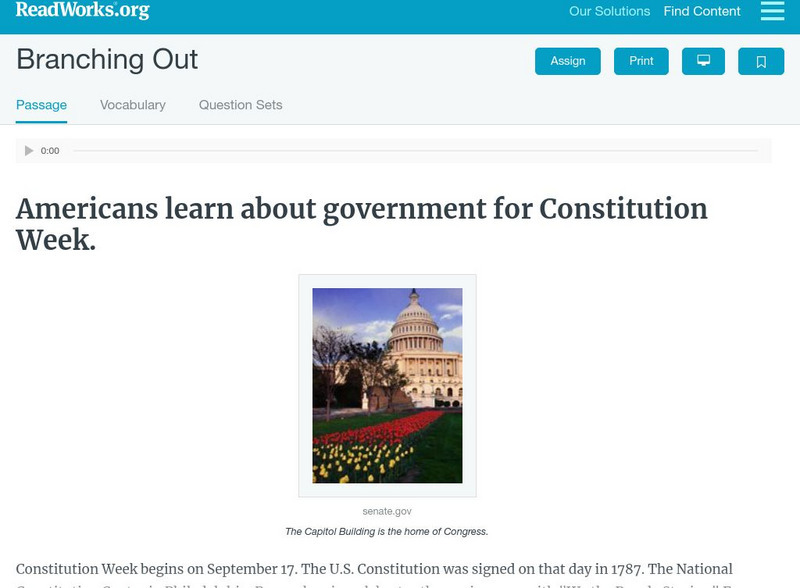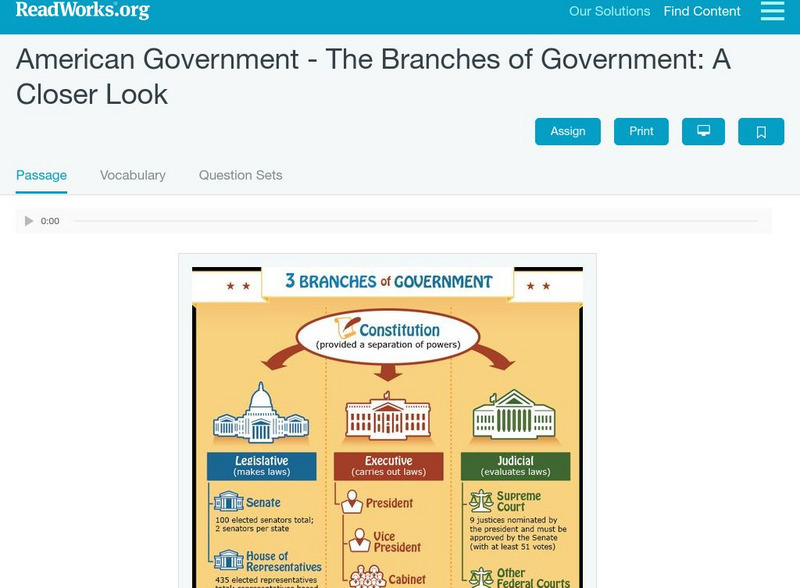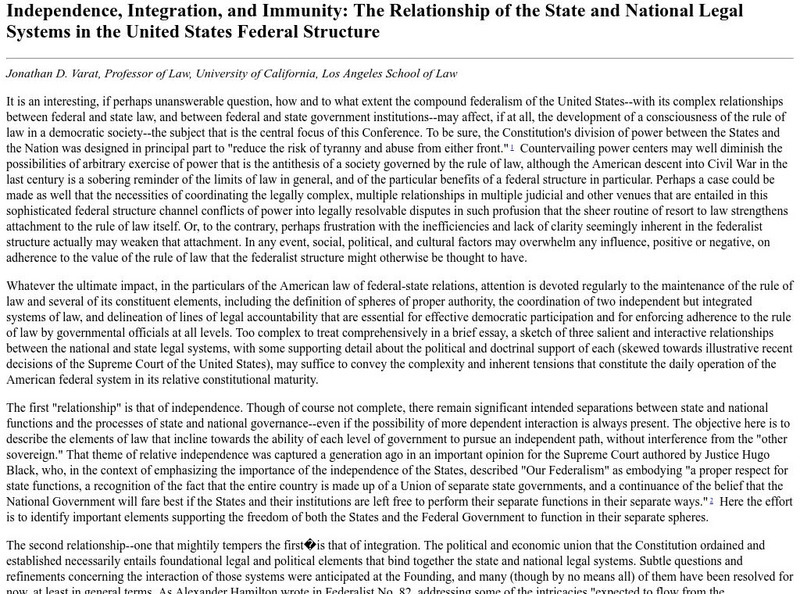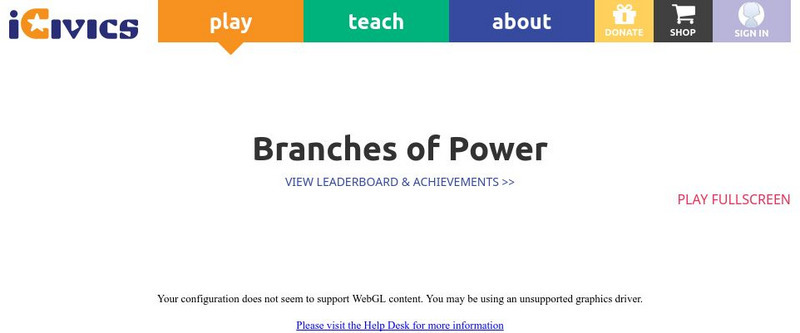Khan Academy
Khan Academy: Checks on the Judicial Branch: Foundational
This resource from Khan Academy provides foundational-level practice questions over the checks on the government's judicial. These questions are intended for students taking high school or college level American Government and Civics...
iCivics
I Civics: Mini Lesson: Executive Orders
Students discover how presidents use executive orders to wield power and how the legislative and judicial branches support and challenge these measures.
iCivics
I Civics: Judicial Branch in a Flash!
In this lesson, learners learn the basics of our judicial system, including the functions of the trial court, the Court of Appeals, and the Supreme Court. They also learn how a case moves up through these levels and discover that these...
iCivics
I Civics: Three Branches
A web quest looking at how a law gets passed as it moves through the three branches of the United States government: executive, legislative, and judicial. Each page has a question to answer, and a link to a site with information specific...
iCivics
I Civics: Marbury v. Madison (1803)
This mini-lesson covers the basics of the Supreme Court's decision that affirmed the Court's power of judicial review. Students learn how Congress tried to add to the Supreme Court's Constitutional power, how the Supreme Court rejected...
iCivics
I Civics: Games: Branches of Power
Interactive and educational game puts players in control of all three branches of government and tests their abilities to turn issues of concern into full-fledged laws.
iCivics
I Civics: Separation of Powers: What's for Lunch?
Students find out how the three branches of government interact with each other and how decisions about laws are made by several parts of the U.S. government.
Center For Civic Education
Center for Civic Education: How Constitution Used to Organize the New Govt [Pdf]
This lesson describes how, using the guidelines provided in the Constitution, the First Congress in April 1789 named the new president and vice president, provided funding for the new government, organized the executive branch, organized...
Read Works
Read Works: Branching Out
[Free Registration/Login Required] Students read about three branches of government and their system of checks and balances. A question sheet is available to help students build skills in classifying and categorizing.
Read Works
Read Works: American Government the Branches of Government
[Free Registration/Login Required] This informational text passage discusses the three branches of government in the United States. This passage is a stand-alone curricular piece that reinforces essential reading skills and strategies...
Read Works
Read Works: American Government Branches of Government: A Closer Look
[Free Registration/Login Required] This informational text passage gives explanation about the branches of the government. This passage is a stand-alone curricular piece that reinforces essential reading skills and strategies and...
iCivics
I Civics: Judicial Review
This lesson plan explores the case that established the power the Supreme Court has today. Learners will learn how the decision in Marbury v. Madison influenced the structure of the third branch, and how the Court's use of judicial...
iCivics
I Civics: Judges: Playing Fair
This mini-instructional activity examines the role of fair and impartial courts in American life. Students learn a basic overview of the judiciary branch, including how judges are appointed and held accountable by citizens.
iCivics
I Civics: Our Courts: Constitution Day Lesson: Checks and Balances [Pdf]
Students learn the roles and responsibilities of each branch of government and where the checks and balances are located in this role-playing lesson. Requires Adobe Reader.
Center For Civic Education
Center for Civic Education: Relationship of State and National Legal Systems
This lengthy essay describes the balance between state and federal judiciary courts and touches on independence, integration, power limits and immunities.
Khan Academy
Khan Academy: Federalist No. 78
This resource from Khan Academy includes the full text of Alexander Hamilton's Federalist No. 78, one of the Federalist Papers. This lesson is intended for students taking high school or college level American Government and Civics...
Other
Civics Resources: Worcester v. Georgia
In December 1829, President Andrew Jackson announced his Indian removal proposal in an address to the U.S. Congress. In 1830 Congress passed the Indian Removal Act, which authorized the president to grant the Indians unsettled lands west...
Khan Academy
Khan Academy: Baker v. Carr
This resource from Khan Academy provides practice questions over Baker v. Carr, a Supreme Court case that addresses equality in voting districts. These questions are intended for students taking high school or college level American...
Khan Academy
Khan Academy: Congressional Behavior: Foundational
This resource from Khan Academy provides foundational-level practice questions over Congressional behavior. These questions are intended for students taking high school or college level American Government and Civics courses, including...
iCivics
I Civics: Branches of Power
Do you like running things? Branches of Power allows you to do something that no one else can: control all three branches of government! You'll have the power to write any laws you want about issues you choose. Careful, though, there's a...
National Cable Satellite Corporation
C Span Classroom: Free Resources for Teaching Civics and u.s. Government
This is a site filled with current events that make connections to the relevant historical topics. There are six clickable topics, the videos of which are updated weekly. RealPlayer is needed and registration is required to stream or...
Read Works
Read Works: Brazil Today: Brazil's Constitution
[Free Registration/Login Required] An informational text about the Constitution of Brazil. A question sheet is available to help students build skills in reading comprehension.













